Tamagoyaki or Atsuyaki tamago is a Japanese rolled omelet made with beaten eggs that are seasoned with dashi, soy sauce & sugar. Layers are then rolled together in a tamagoyaki pan to create its shape. You'll love this easy 3 ingredient tamagoyaki recipe that's simplified for the home cook and doesn't require dashi!
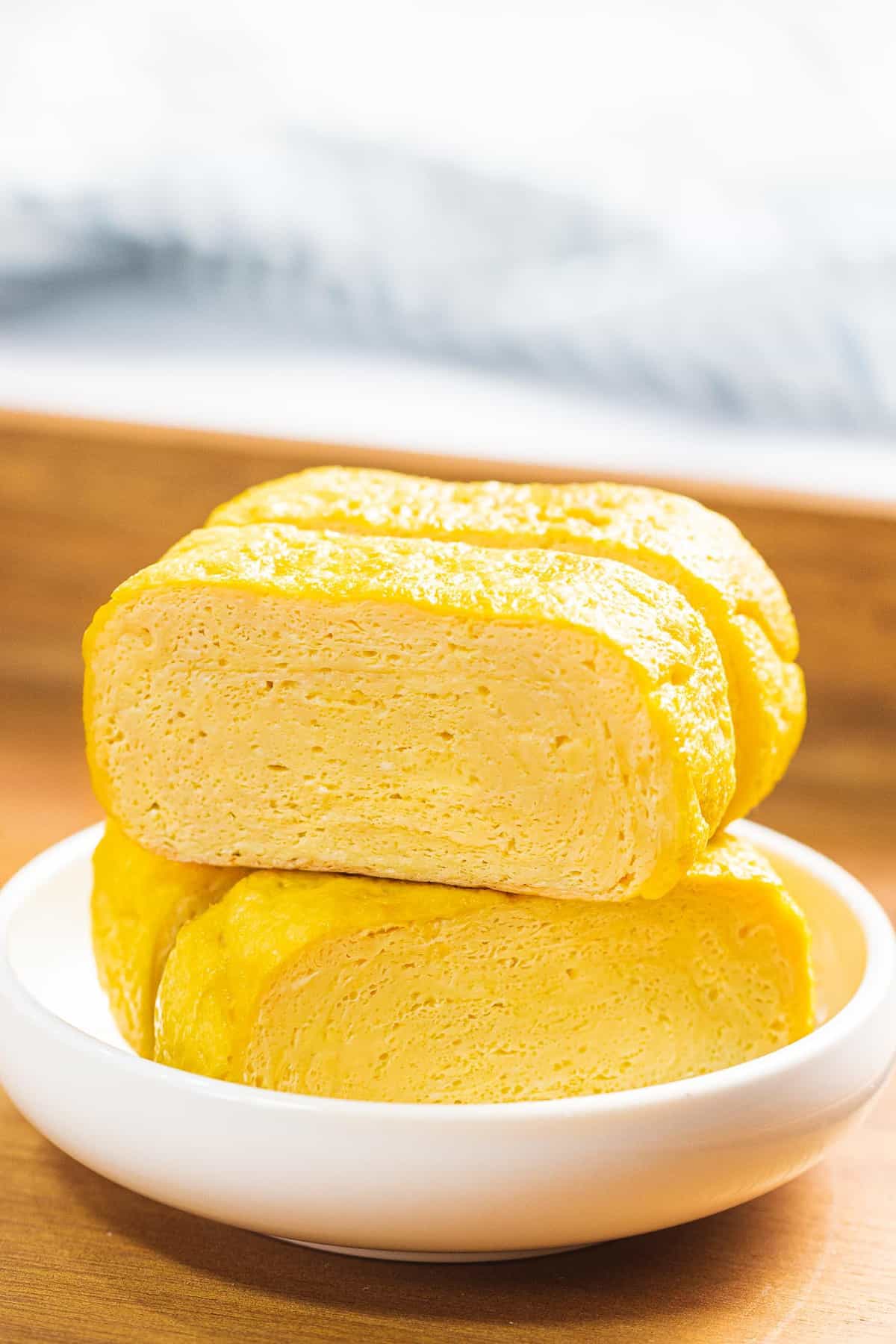
Try this easy version of tamagoyaki or Japanese rolled omelet! It's made with just three ingredients and will give you soft, fluffy eggs that are just like the ones in sushi restaurants! It's a simplified version that doesn't require dashi but rather uses mentsuyu (めんつゆ).
What is tamagoyaki?
Tamagoyaki (卵焼き or 玉子焼き, translating to 'grilled or fried egg') is a Japanese rolled omelet made by rolling layers of cooked egg one at a time in a rectangular pan. You may also find it called Atsuyaki tamago, meaning 'thick fried egg'.
The egg mixture is made by beating eggs with soy sauce, sugar, and other flavors giving it a slightly sweet and salty flavor with lots of umami. Other fillings or flavors you can add include seaweed, green onions, seafood, and cheese.
Tamagoyaki made with dashi is called 'Dashimaki Tamago' and is how you get lots of umami flavor with a soft, fluffy texture. Most sushi restaurants use dashi in their tamago giving it extra flavor. This recipe is most similar to dashimaki tamago in terms of flavor and texture due to the addition of memmi seasoning sauce and water.
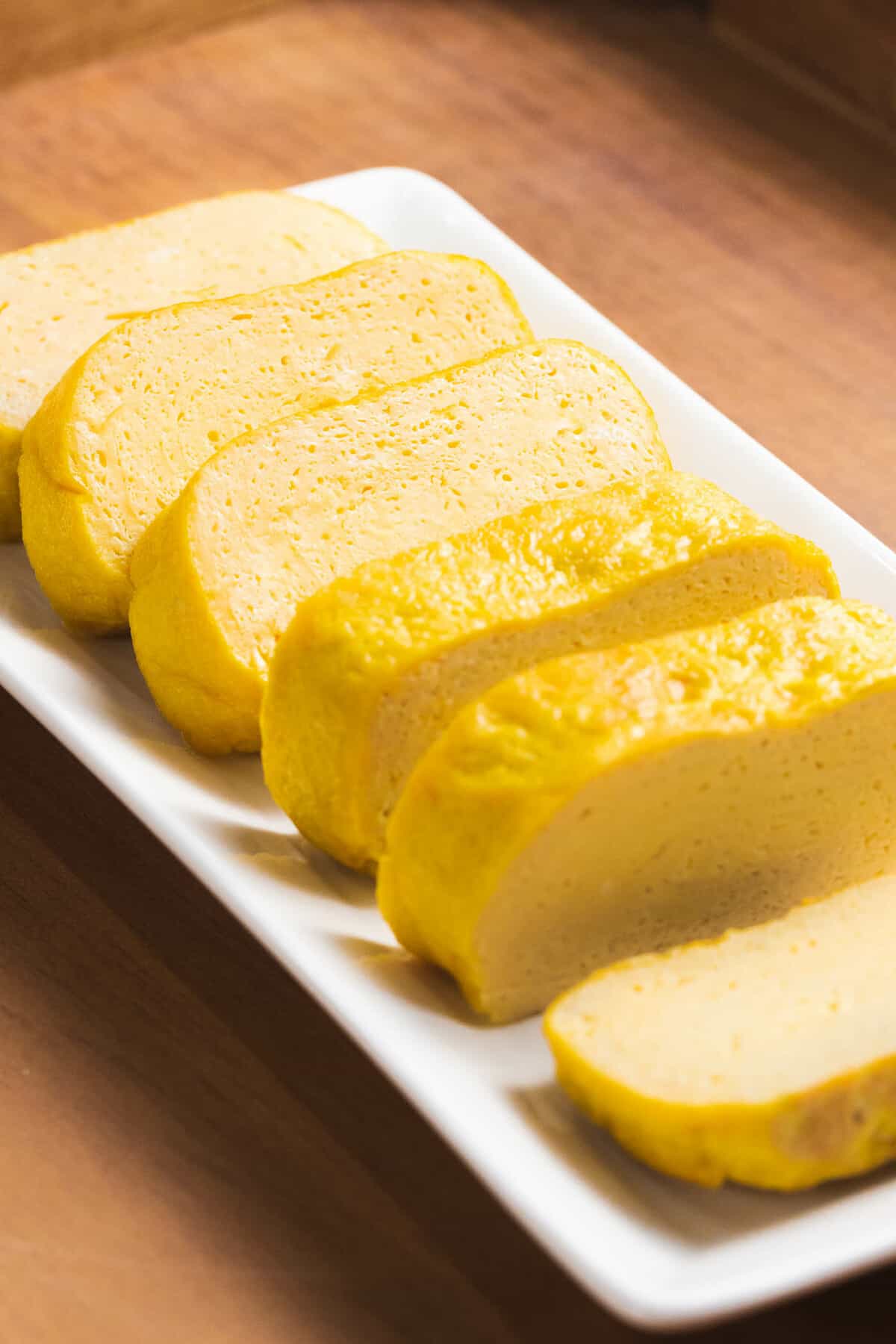
How to serve tamagoyaki
There are several ways to serve this Japanese omelet:
- In sushi or rolls such as futo maki or tamago nigiri.
- In bento boxes - it's a popular side for children's lunches.
- A side for breakfast, lunch, or dinner.
- Sweet versions of tamagoyaki are served at the end of a meal in some sushi restaurants which typically have a darker color due to the sugar content.
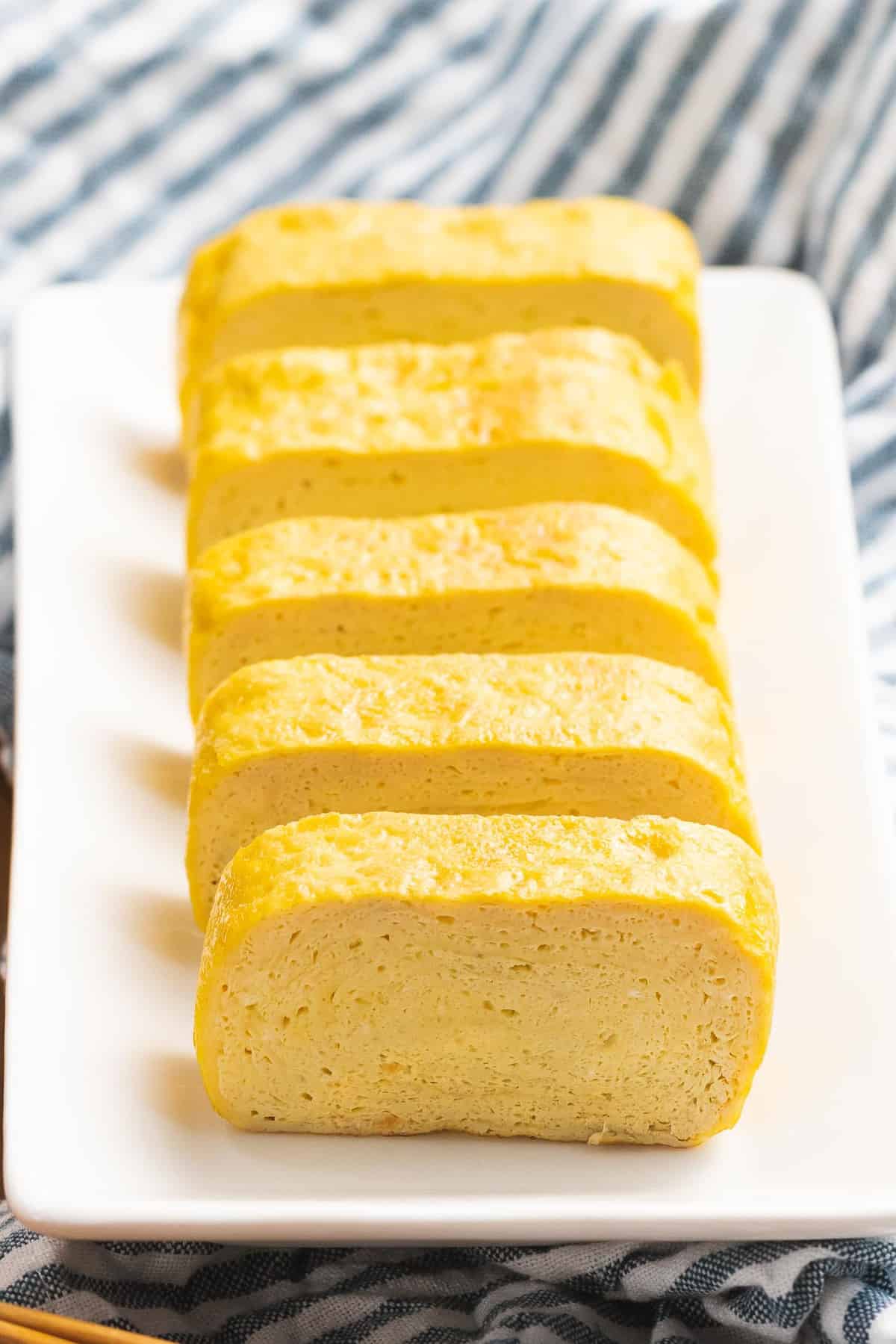
Ingredients
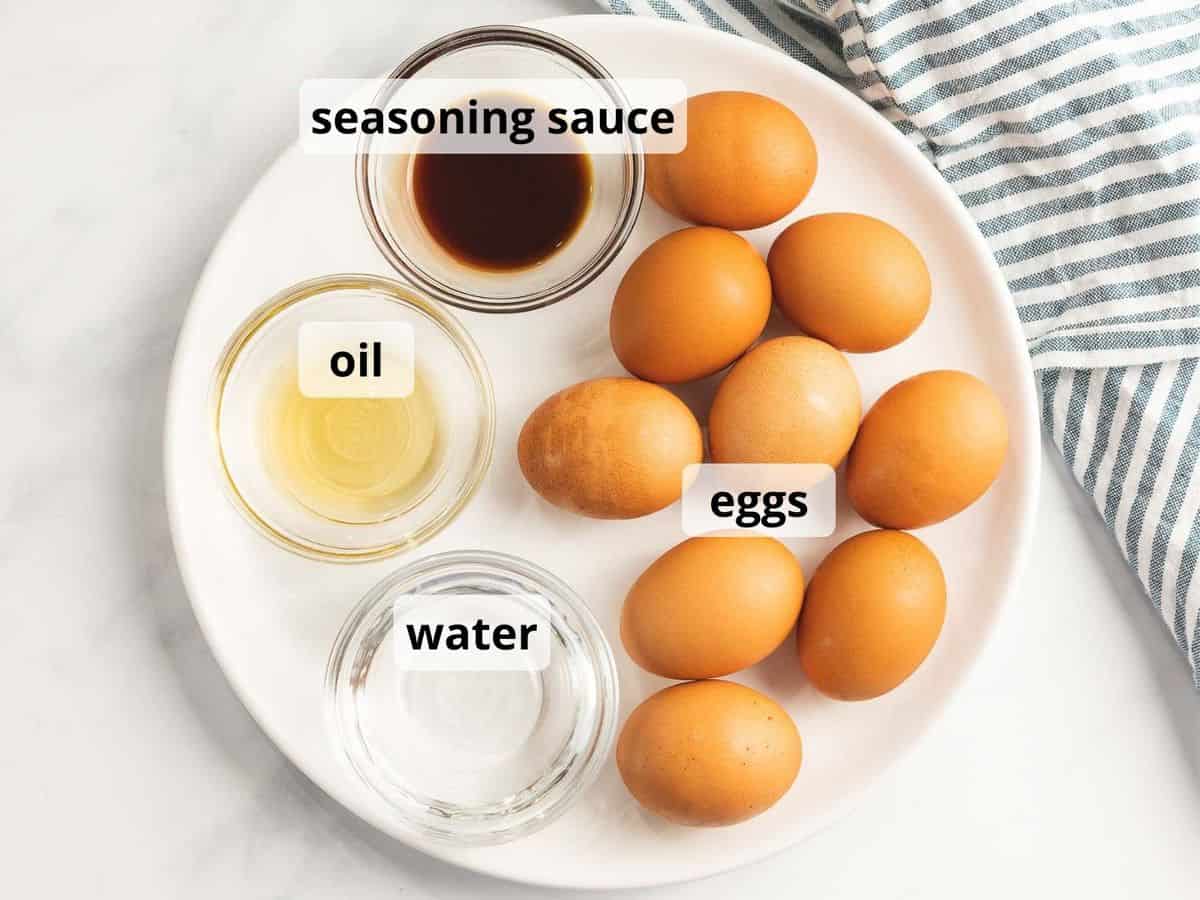
- Eggs - I used nine large eggs to get thick, fluffy tamagoyaki but you can halve the recipe for a smaller portion.
- Seasoning sauce - For a quick and easy version, I used a Japanese seasoning sauce called memmi sauce. It includes soy sauce, sugar, and bonito extract which are all flavors included in traditional tamagoyaki recipes.
- Oil - Use neutral vegetable oil to lightly oil the pan after each layer of omelet.
Steps
- Add the eggs, water, and memmi seasoning sauce into a pourable cup and beat well with a whisk until fully combined. Heat a tamagoyaki pan over medium heat and apply a bit of oil. Pour a thin layer of the egg mixture and scramble for the first few seconds.
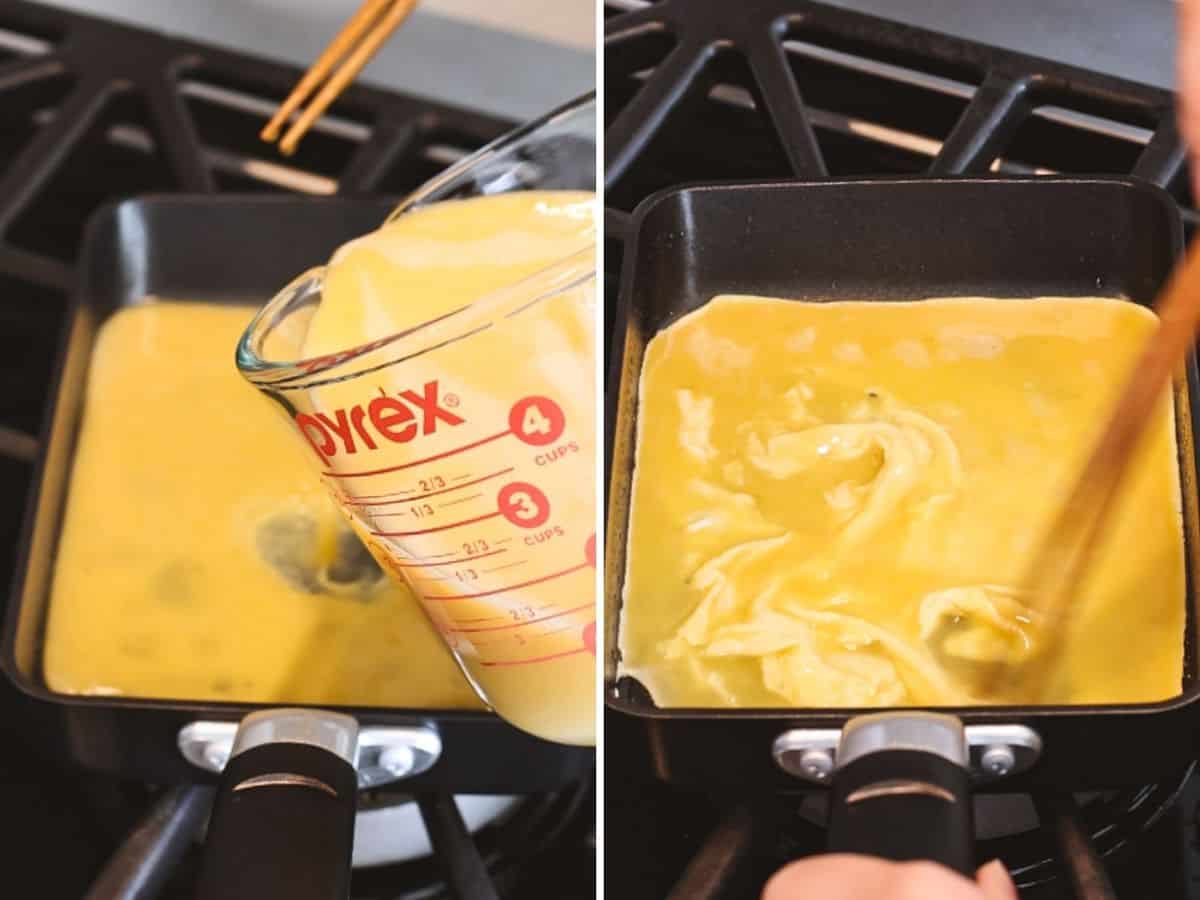
- Allow the egg to set in an even layer until it's about 70% cooked and the surface is still wet. Roll up the egg into an omelet and set it to one side of the pan. Lightly oil the pan and pour another thin layer of egg mixture into the pan.
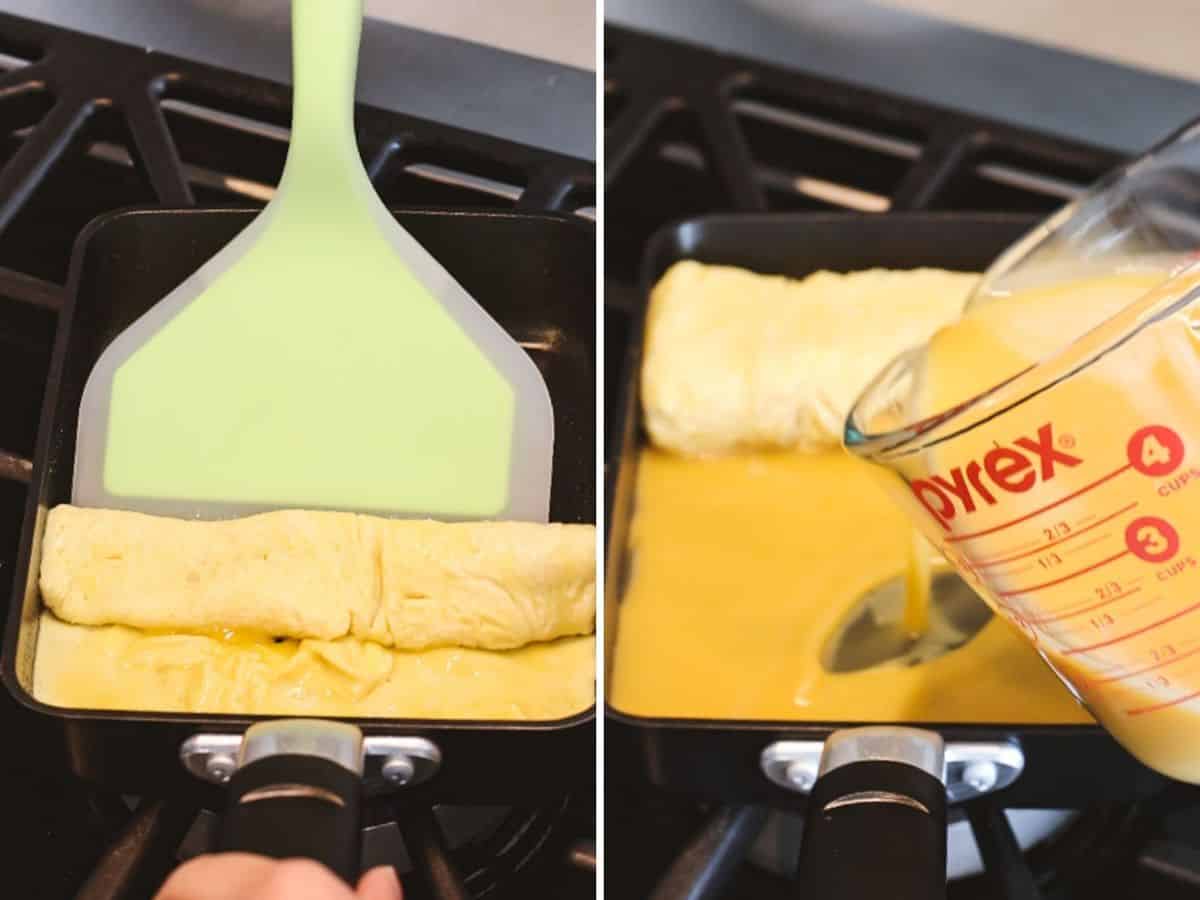
- Lift the omelet to allow the egg mixture to flow under it. Slightly scramble the eggs for a few seconds and allow them to set into an even layer. Pop large bubbles as you see them for even cooking.
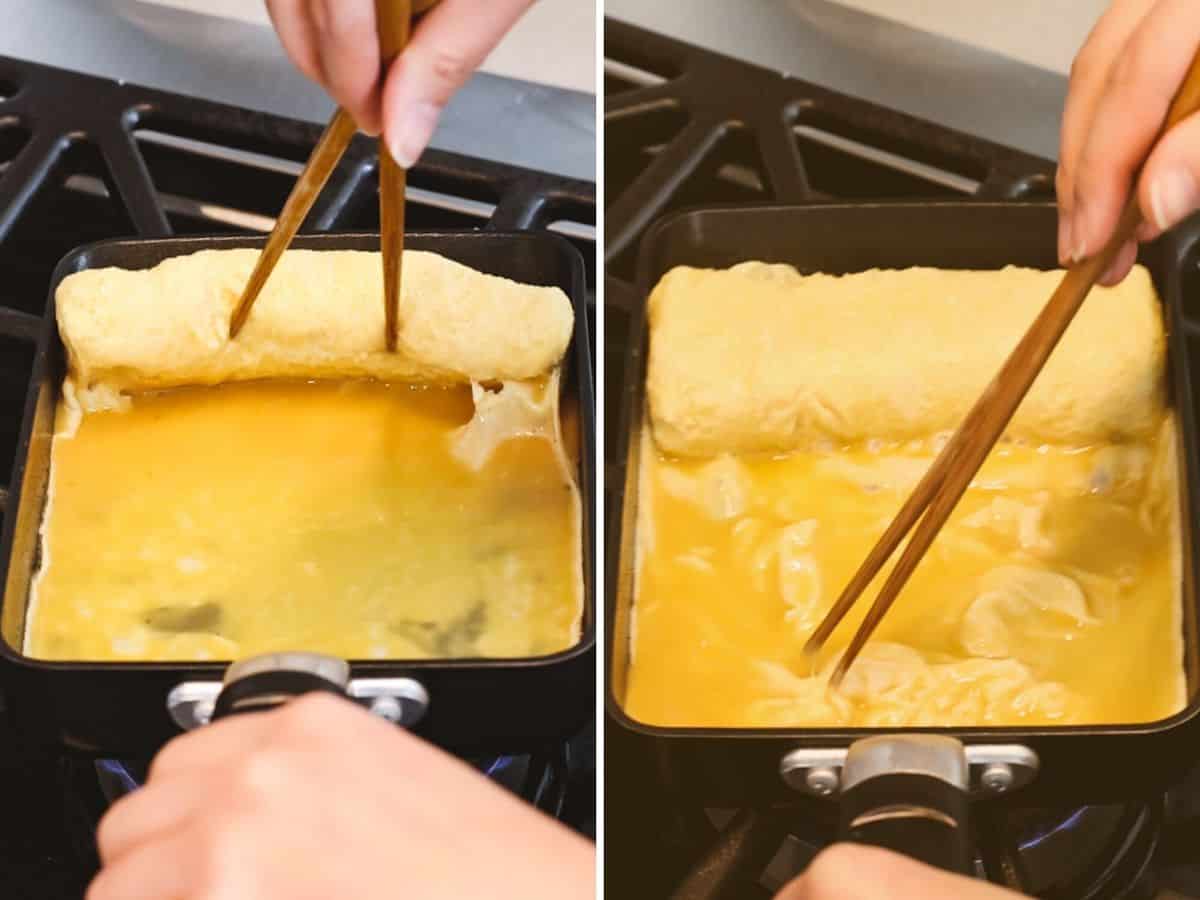
- When the egg mixture is about 70% cooked but the surface is still wet, gently roll the omelet to the other side of the pan. Continue cooking and rolling each layer until the egg mixture is used up.
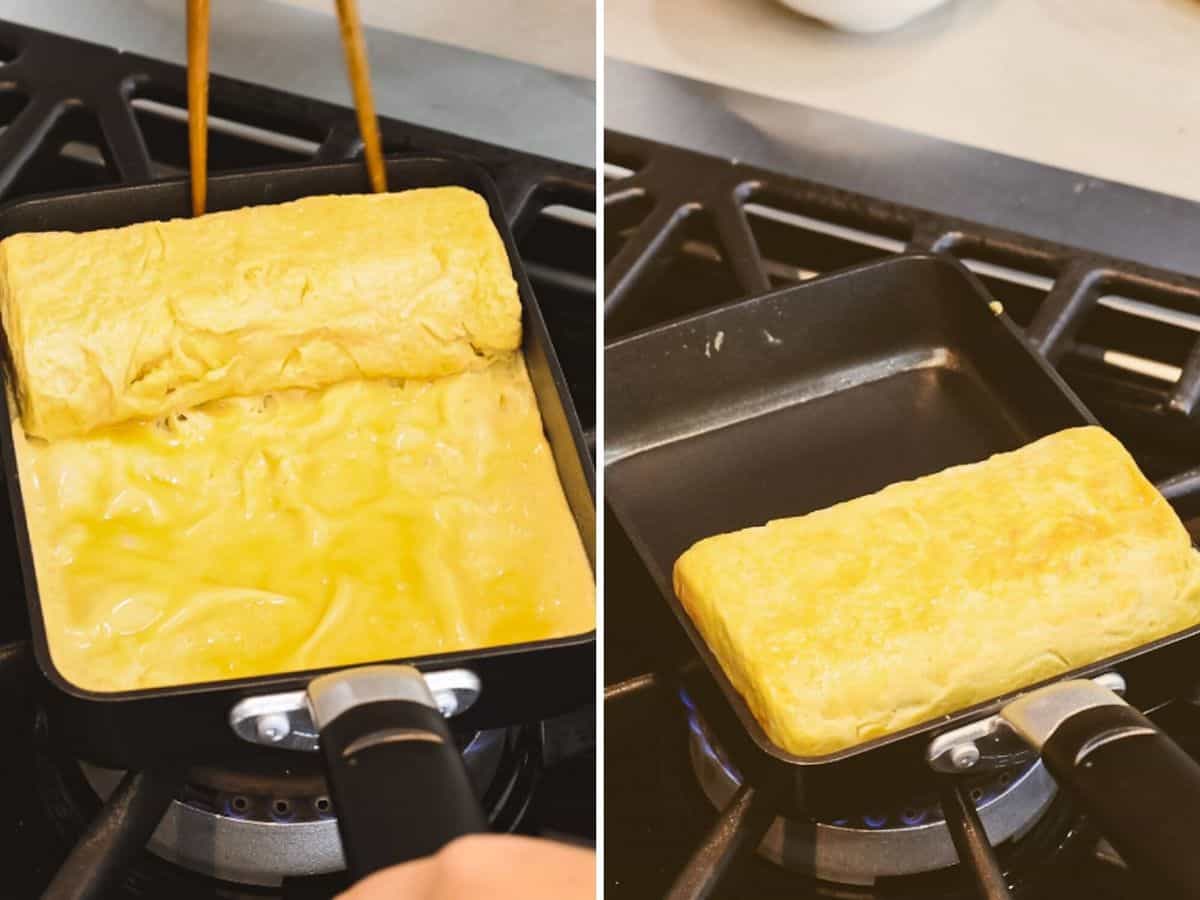
- Remove the tamagoyaki from the pan and allow it to rest on a cutting board to get clean slices. When it's warm to the touch, slice into thick slices and serve.
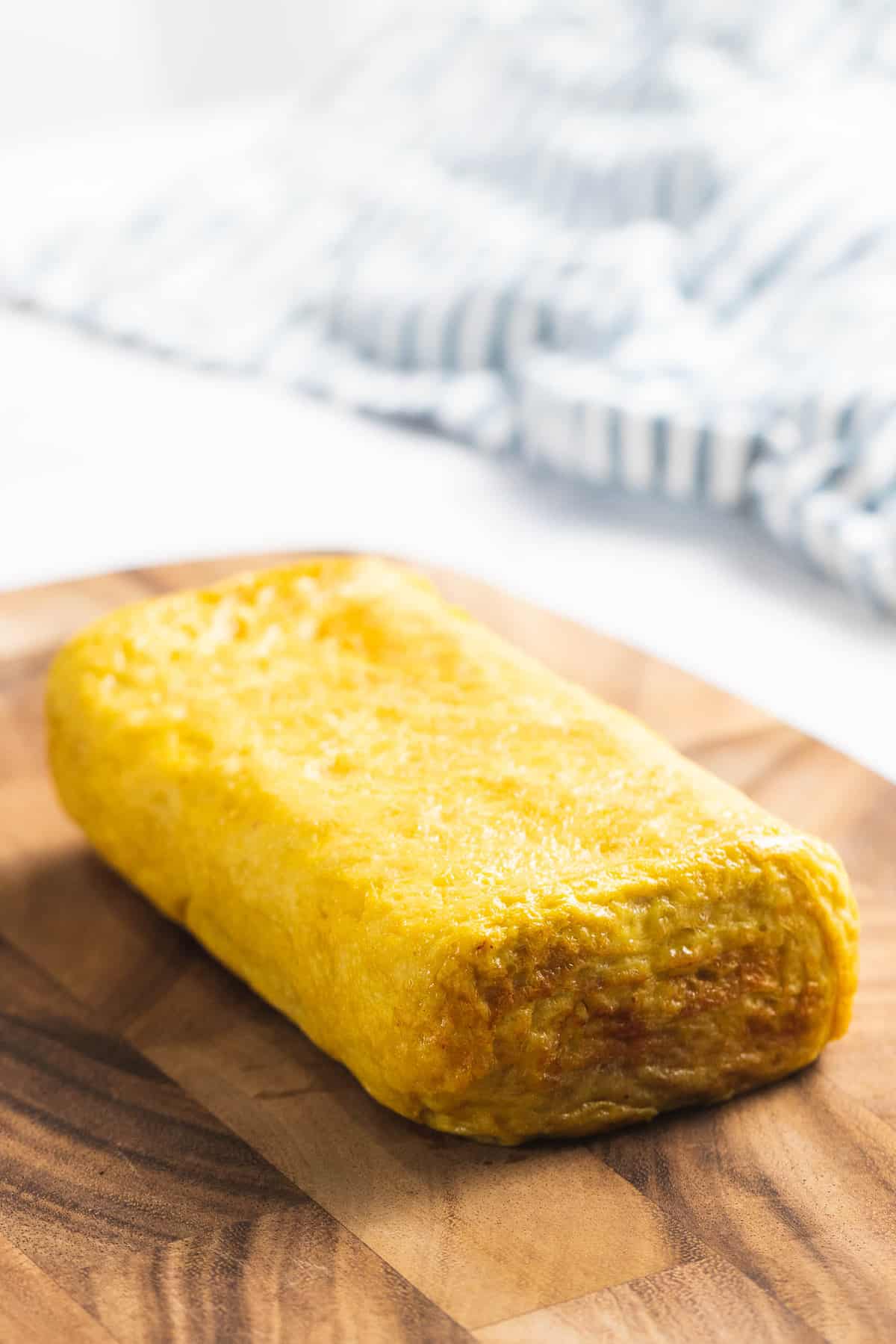
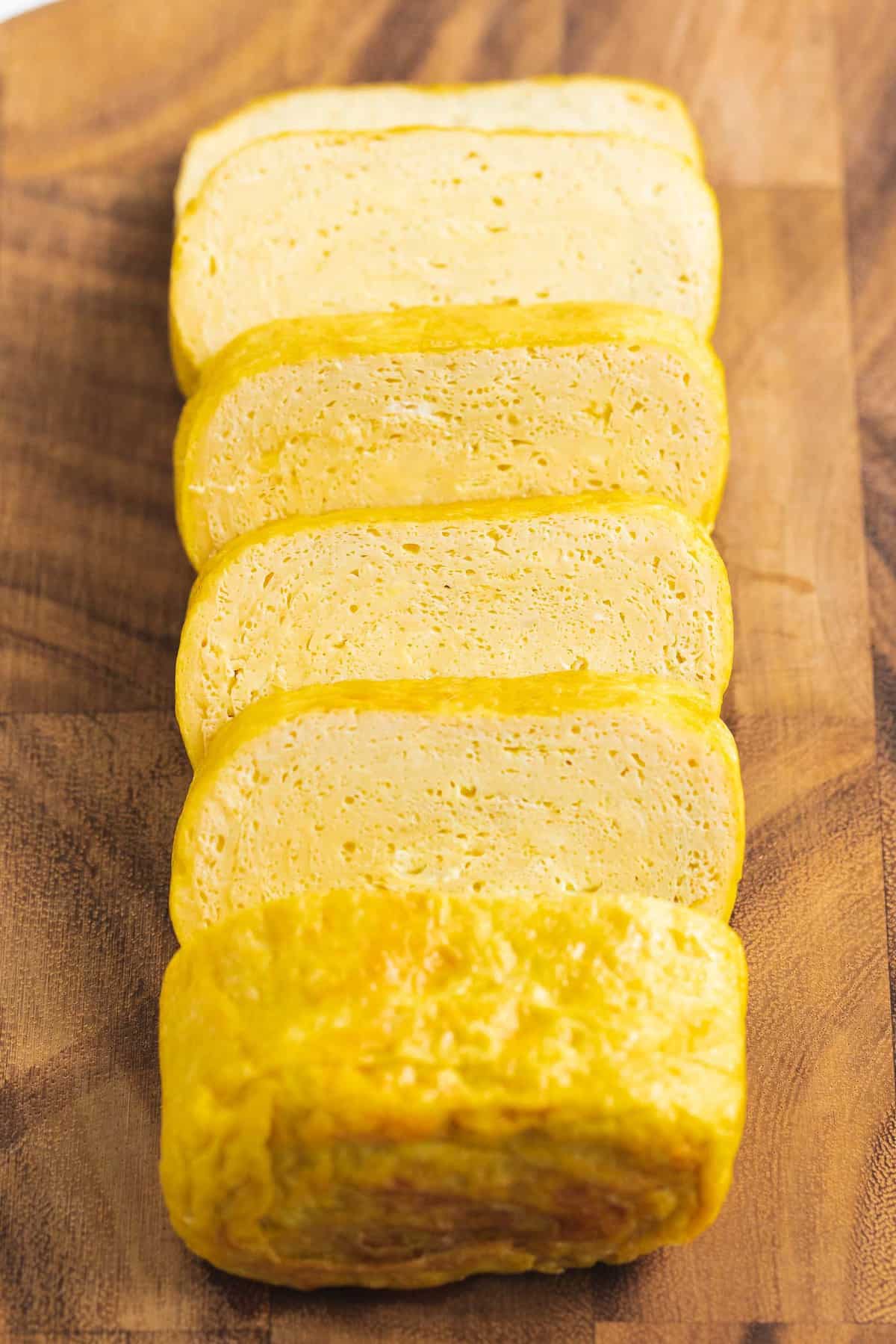
Tamagoyaki Pan
I recommend using a tamagoyaki pan (affiliate link) if you want the traditional shape of a tall and thick Japanese omelet. A tamagoyaki pan is a square or rectangular pan with straight edges which help form the omelet into its rectangular shape.
If you don't have one, you can use any nonstick pan you'd like and simply cook and roll the egg mixture as described. The shape will be smaller but it will still taste great!
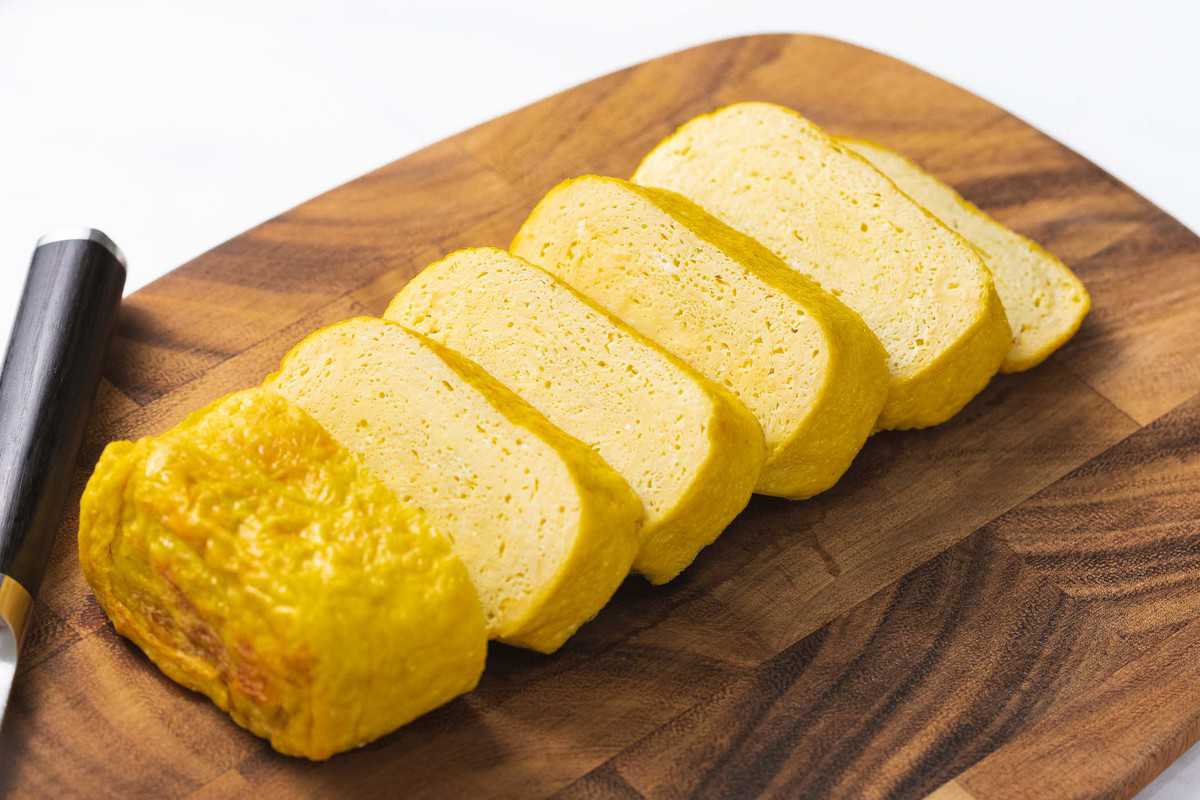
Tips
- To lightly oil the pan, fold a small piece of paper towel and soak it in oil. Use the paper towel to oil the pan in between layers.
- Use chopsticks to pop large air bubbles to ensure even cooking.
- Roll the tamagoyaki as tightly as you can. This prevents gaps and air pockets which are quintessential in a well-formed Japanese omelet.
- Avoid browning the eggs when cooking to get an even appearance. Adjust the heat as needed. Note: sweet tamagoyaki is the exception to this. Due to the high sugar content, sweet tamagoyaki will have a golden brown color.
- Sweet tamagoyaki option: If you're looking for a sweet tamagoyaki option, simply add 1 tablespoon of sugar to the egg mixture. Stir well so the sugar dissolves and be careful not to burn the eggs as sugar burns easily.
More egg recipes:
Recipe
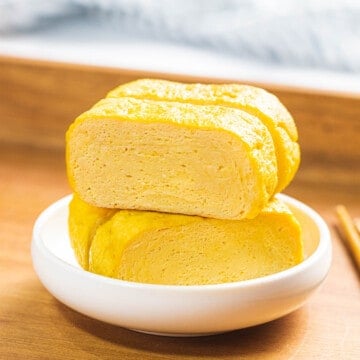
Tamagoyaki (Japanese Rolled Omelet)
Equipment
☑ Ingredients
- 9 eggs
- 1½ Tablespoons oil
- 4 Tablespoons water
- 1 Tablespoon memmi sauce - see Note 1
Instructions
Beat the egg mixture
- Add the eggs, water, and memmi sauce into a cup with an easy-to-pour spout. Beat the eggs with a whisk until the egg whites and yolks are well combined. Optional: strain the mixture for a smoother consistency.9 eggs, 4 Tablespoons water, 1 Tablespoon memmi sauce
Roll first omelet layer
- Heat a tamagoyaki pan or regular pan over medium heat and lightly oil the bottom. Pour a thin layer of the egg mixture to cover the surface of the pan. Slightly scramble the eggs for the first few seconds but allow them to set into an even layer after it starts to cook. When it's 70% cooked but the surface is still wet, roll into an omelet and move to one side of the pan.
Roll more layers
- Re-oil the pan. Pour another thin layer of the egg mixture into the pan and lift the omelet to allow the egg mixture to flow under it. Slightly scramble the eggs for a few seconds and allow to set in an even layer. When the eggs are 70% cooked but the surface is still wet, roll another layer of the omelet and set it to one side of the pan. Repeat this set until the egg mixture is gone.
Cool & Serve
- Remove from the pan and allow it to rest for several minutes for easy slicing. Cut into even slices and serve. Enjoy!
✎ Recipe Notes
- Memmi sauce - This is a concentrated Japanese sauce made of soy sauce, sugar, and bonito extract, which are all traditional ingredients used to make tamagoyaki. It's full of umami flavor and is typically used as a noodle soup base, called mentsuyu (めんつゆ).
- I recommend a tamagoyaki pan but any nonstick pan will do.
- To lightly oil the pan, fold a small piece of paper towel and soak it in oil. Use the paper towel to oil the pan in between layers.
- Use chopsticks to pop large air bubbles to ensure even cooking.
- Roll the tamagoyaki as tightly as you can. This prevents gaps and air pockets in the omelet.
Nutrition
*Nutritional information is an estimate, calculated using online tools.




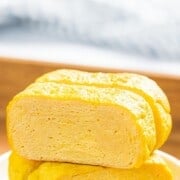
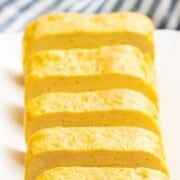

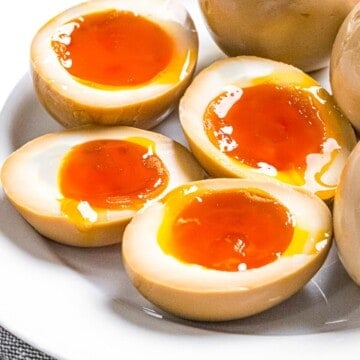


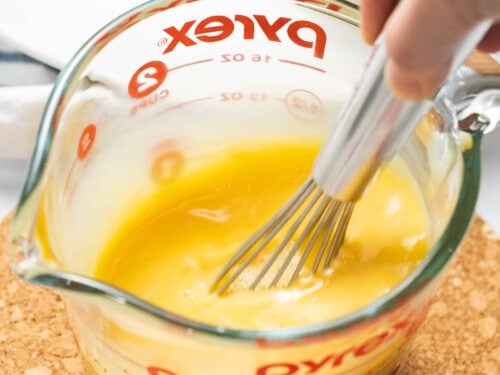
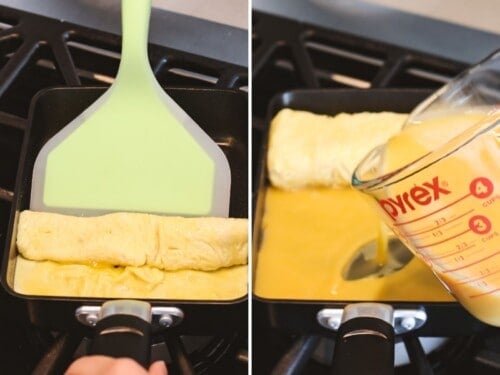
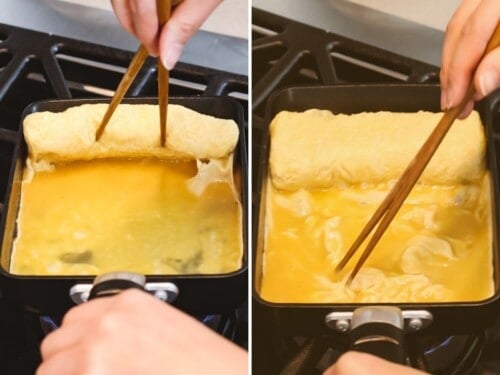
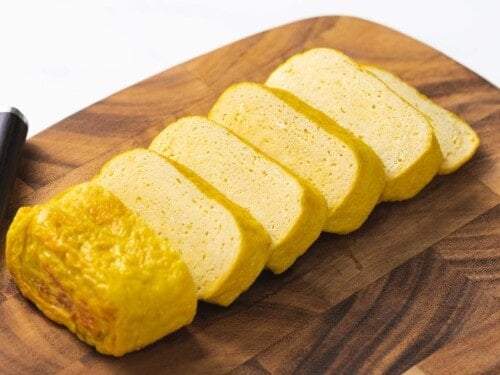
Farah Maizar
Absolutely stunning! And so much easier than I thought it would be! Thanks so much for the delicious recipe.
Jamie
That's great to hear Farah! Thanks so much!
Daniela
I always wanted to learn how to make tamagoyaki. Thank you for your detailed instructions it came out perfect
Jamie
That makes me so happy! Glad you found the details helpful. 🙂
Alex
Hi Jamie!
Thank you so much for sharing this fantastic recipe. I have always wondered how to replicate this dish from my favourite restaurants. On this occasion, I made a small batch, but I’ve just ordered the proper pan and will make the full recipe next time. Thank you so much for including all of the helpful process shots which made it so easy to get the steps right along the way!
Ieva
It's one of my favourite things to order at a Japanese restaurant when we go for breakfast! Tried it yesterday morning at home and it was perfect! Restaurant-quality recipe with really good instructions! Thanks so much!
Raksha Kamat
I was looking for this Japanese rolled omelet recipe. I followed your recipe and it turned fabulous, soft and fluffy just like how we get in restaurants. Love to pack it in bento box for my kid. Thanks for sharing step by step pictures.
Kathleen
I am going to make this ASAP! It looks just like the ones I get at sushi restaurants.